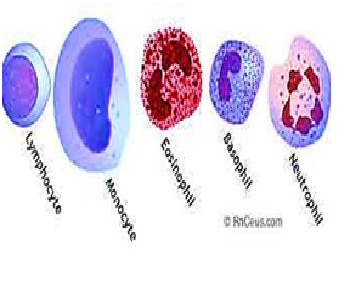

Which of the following cells are of different types, size and shapes?
a) platelets
b) plasma
c) WBCs
d) RBCs
Explanation:White blood cells are part of the body's immune system. They help the body fight infection and other diseases. Types of white blood cells are granulocytes (neutrophils, eosinophils, and basophils), monocytes, and lymphocytes (T cells and B cells).

Which of the
following cells protect your body from germs and harmful things?
a) platelets
b) plasma
c) WBCs
d) RBCs
Which of the following cells make the immune system?
a) platelets
b) plasma
c) WBCs
d) RBCs
Which of the following disease attacks WBCs in the blood of patient?
a) malaria
b) TB
c) AIDS
d) Dengue fever
Explanation:Acquired immunodeficiency syndrome (AIDS) is a chronic, potentially life-threatening condition caused by the human immunodeficiency virus (HIV). By damaging your immune system, HIV interferes with your body's ability to fight infection and disease.
In which disease the immune system of a patient fails to fight against disease causing germs?
a) malaria
b) TB
c) AIDS
d) Dengue fever
Blood Vessels:
There are three kinds of blood
vessels: arteries, veins, and capillaries. Each of these plays a very
specific role in the circulation process. Arteries carry oxygenated blood away
from the heart. They're tough on the outside but they contain a smooth interior
layer of epithelial cells that allows blood to flow easily.